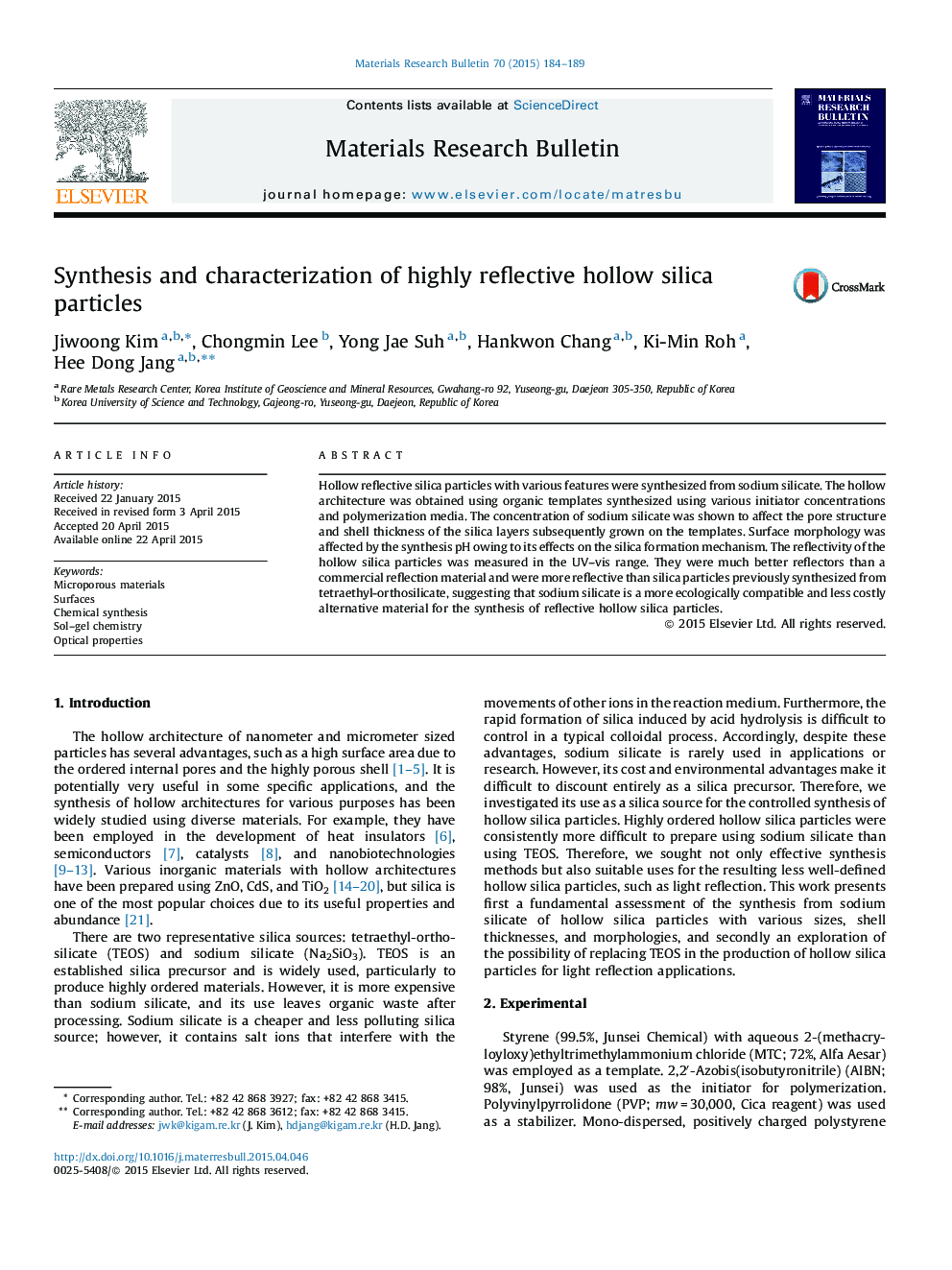| Article ID | Journal | Published Year | Pages | File Type |
|---|---|---|---|---|
| 1487277 | Materials Research Bulletin | 2015 | 6 Pages |
•Highly reflective hollow silica spheres were synthesized using sodium silicate.•Organic template size was varied by initiator concentration and polarity of medium.•Thickness and surface morphology of the spheres were effectively modified.•Less well-defined hollow spheres showed an excellent reflectivity in UV–vis range.
Hollow reflective silica particles with various features were synthesized from sodium silicate. The hollow architecture was obtained using organic templates synthesized using various initiator concentrations and polymerization media. The concentration of sodium silicate was shown to affect the pore structure and shell thickness of the silica layers subsequently grown on the templates. Surface morphology was affected by the synthesis pH owing to its effects on the silica formation mechanism. The reflectivity of the hollow silica particles was measured in the UV–vis range. They were much better reflectors than a commercial reflection material and were more reflective than silica particles previously synthesized from tetraethyl-orthosilicate, suggesting that sodium silicate is a more ecologically compatible and less costly alternative material for the synthesis of reflective hollow silica particles.
Graphical AbstractFigure optionsDownload full-size imageDownload as PowerPoint slide
